Spain’s fun-loving reputation precedes it across the globe, and the most popular Spanish festivals are no different.
Whether you’re up for throwing tomatoes at complete strangers or taking a midnight dip in the ocean to welcome summer, there’s a Spanish fiesta you’ll love.
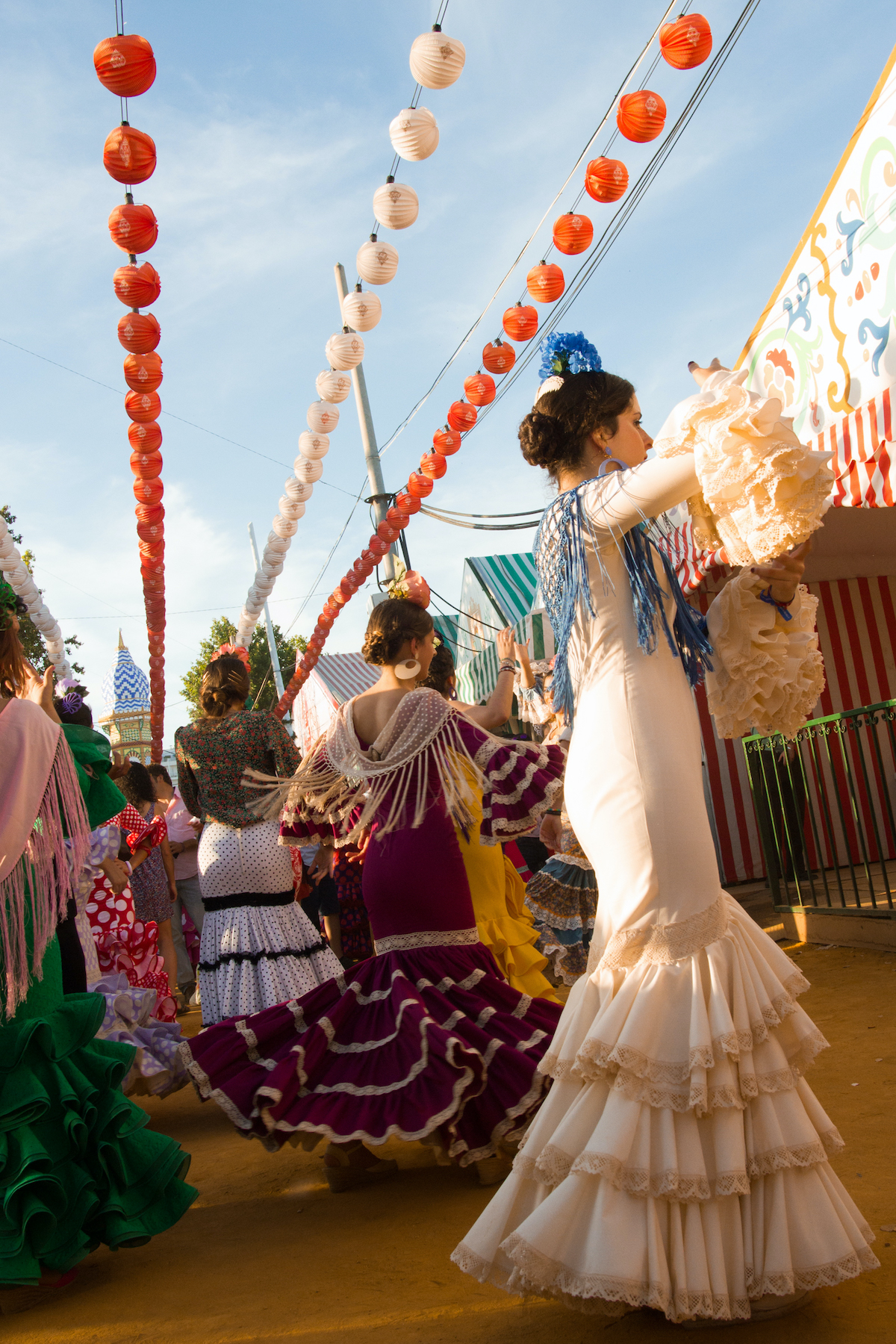
We’d be willing to bet there’s a celebration happening somewhere in Spain nearly every day of the year. Even the tiniest, most remote villages have their local festivities that they proudly celebrate when the time rolls around.
But there are a handful of popular Spanish festivals that draw thousands of curious travelers from around the world—in addition to plenty of locals. Here are the Spanish fiestas that have gained fame across the world.
1. Feria de Abril (Seville)
The Feria de Abril (April Fair) is the most important week on the calendar down in sunny Seville. Locals and visitors alike eat fried fish, drink rebujito (a refreshing yet potent blend of 7Up and dry sherry), and dance sevillanas—all while donning colorful flamenco dresses, traditional riding outfits, and smart suits.
All the action takes place at the real de la feria (fairgrounds), where you’ll find over 1,000 casetas. These canvas tents are put up by businesses, groups of friends, clubs, affluent local families, or political parties, and are the beating heart of feria life. Most are invitation-only, but there are a handful of public casetas where all are welcome.
Within the walls of a caseta, you can expect drinks to be flowing, delicious tapas being served, and people dancing to sevillanas, the official folk music of the city. Further afield, you’ll find the ominously dubbed calle del infierno (“hell street”), or amusement park area filled with rides, carnival games, and food stands. (Its odd-sounding nickname is a tongue-in-cheek reference to how loud it can get here!)
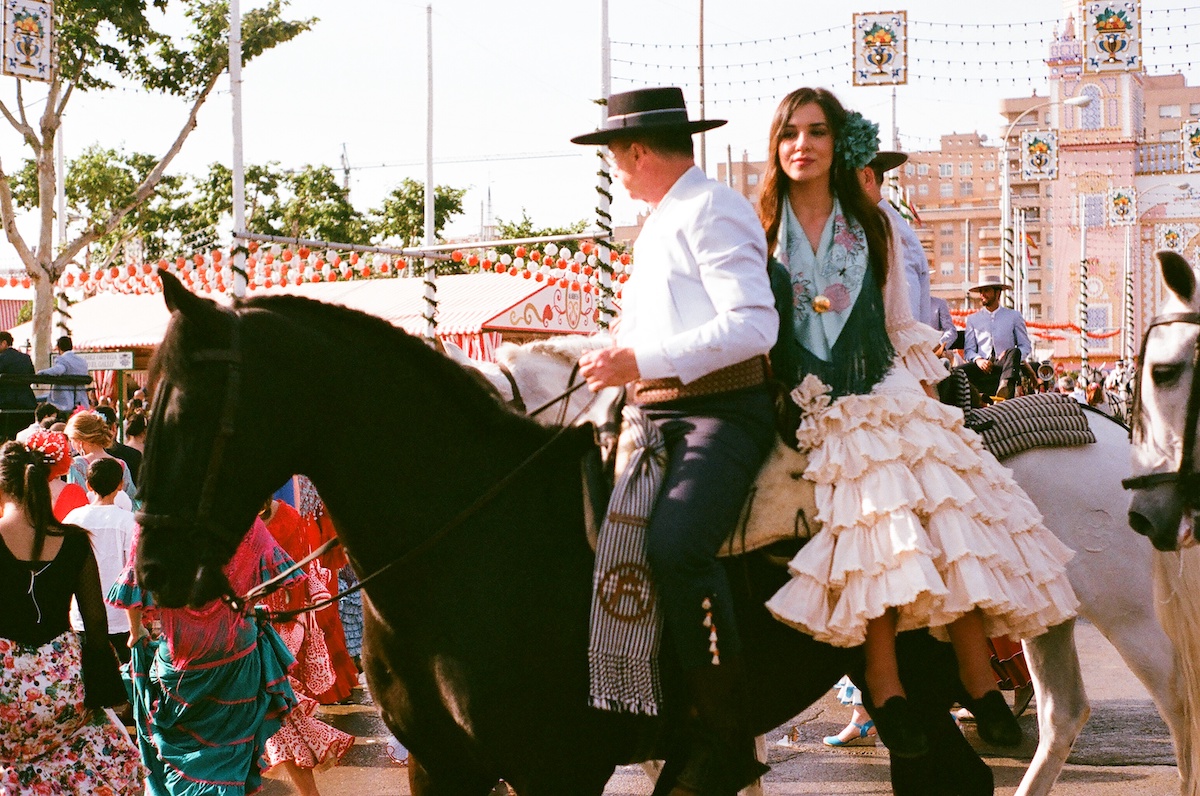
2. La Diada de Sant Jordi
Let’s swing up north to Catalonia, where the most romantic day of the year isn’t in February—it’s on April 23!
The Feast of St. George, or La Diada de Sant Jordi in Catalan, celebrates the region’s patron saint. It’s a day of love and romance when friends and lovers exchange books and roses.
Traditionally, men bought roses for women and women bought books for men. However, times have changed and gender no longer dictates who gets what. Stalls selling both of the above, often decorated with red- and yellow-striped Catalan flag motifs, are everywhere to be found throughout Catalonia.
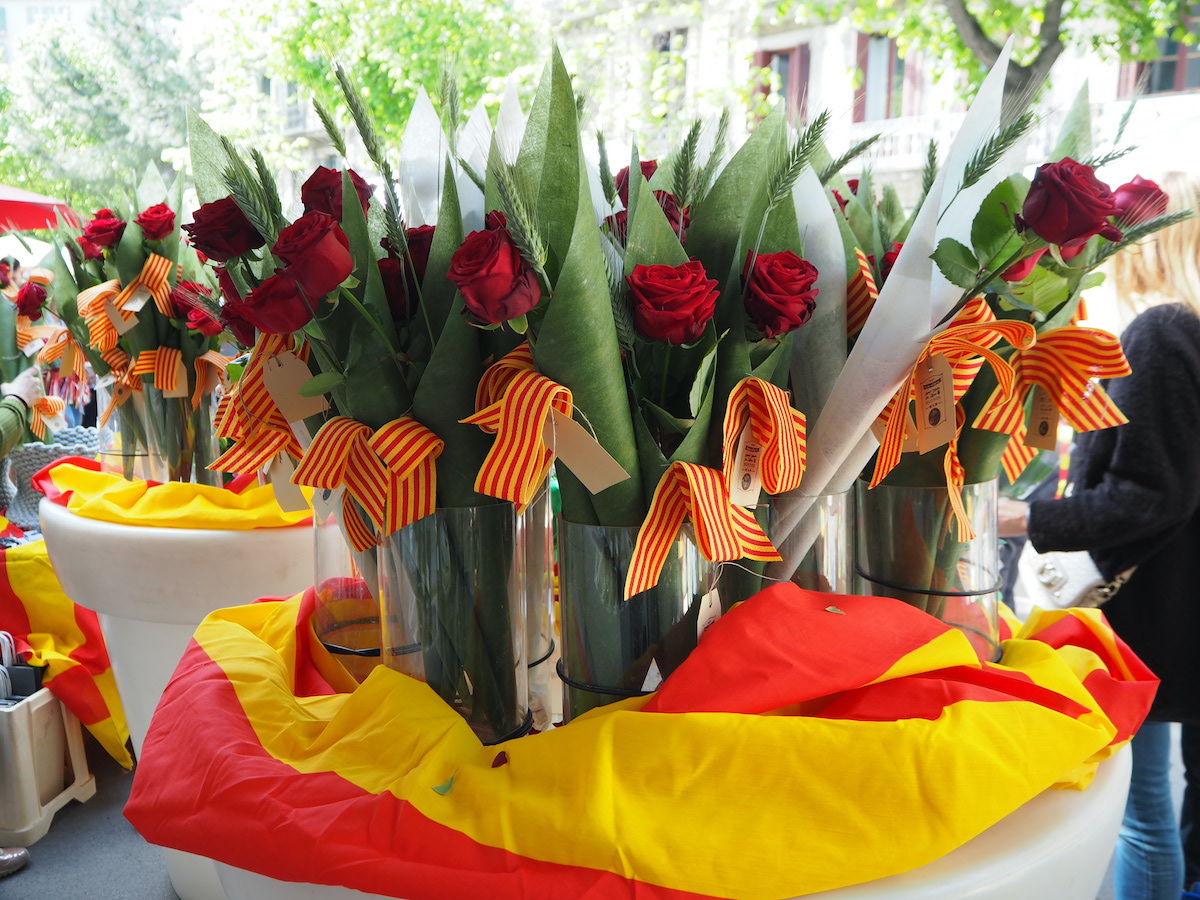
3. Fiesta de San Isidro
May 15 marks one of the most popular Spanish festivals for those residing in Madrid as the city celebrates its patron saint’s feast day.
During the Fiesta de San Isidro (Festival of St. Isidore), Madrid celebrates with concerts, fireworks and other special events. The festival originally began as a religious holiday, and many madrileños still celebrate the festival with a religious pilgrimage.
The pilgrimage finishes at the pradera de San Isidro (St. Isidore’s Meadow), where people can picnic on the grassy lawns or chow down on bites purchased from vendors set up specifically for the event. There’s one constant on the food scene, though: rosquillas, the sweet donut-like treats typically associated with this day.
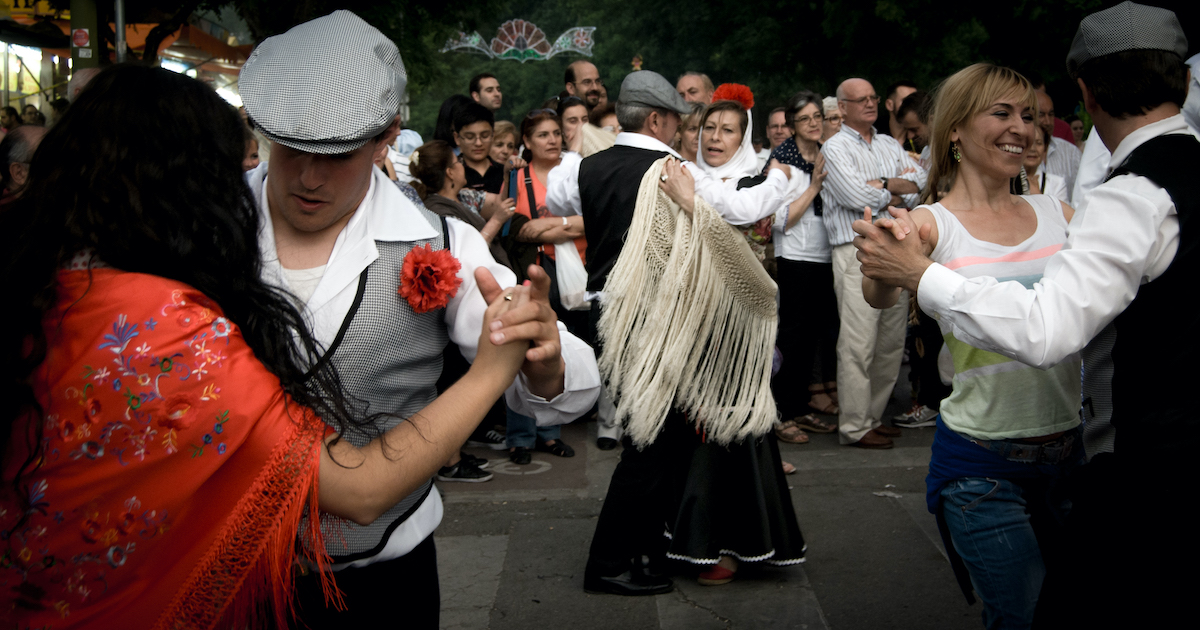
4. La Noche de San Juan
To welcome the summer, coastal cities all over Spain celebrate La Noche de San Juan (St. John’s Eve) on June 23. As one of the most popular Spanish festivals, it takes place on the summer solstice—the longest day of the year and a period of time many believe to be magical.
On La Noche de San Juan, revelers come together around bonfires and partake in a whole host of superstitious activities: jumping over bonfires, burning a piece of paper with a lover’s name, or burning something personal to cleanse their spirit. Once the clock strikes midnight, many will also go for a swim in the ocean—said to purify body and soul.
Celebrations take place in many Spanish cities, but the biggest parties are held in coastal cities like Alicante, Barcelona, and Almería, with Madrid also putting on a respectable show.

5. Fiesta de San Fermín
The Fiesta de San Fermín (St. Fermin festival) takes place in the city of Pamplona and honors the regional co-patron saint. Often referred to as the “running of the bulls,” Ernest Hemingway put this popular Spanish festival on the map in his classic novel The Sun Also Rises.
Though there are numerous events during the festivities, it is the running of the bulls that has gained worldwide fame. It occurs every morning during the weeklong festival and consists of hundreds of brave participants trying to outrun six bulls which have been trained for bullfighting.
Thinking of doing the run? Think again! Throughout its history, 15 people have died and hundreds have been wounded during the event.
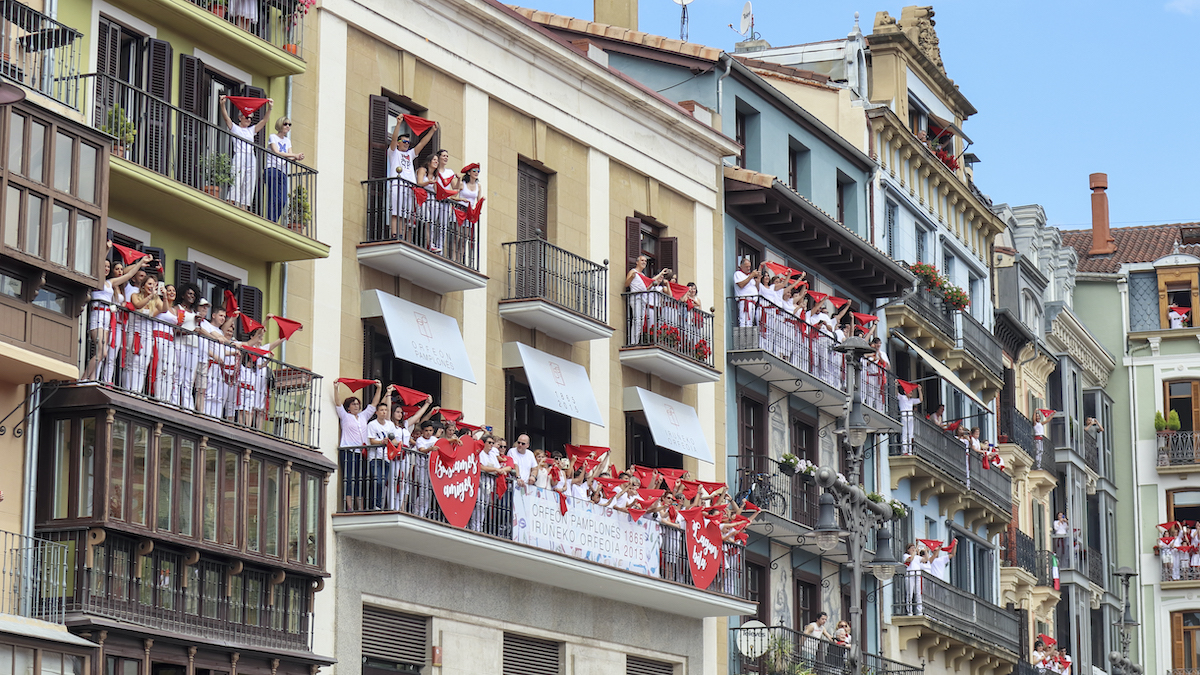
6. La Tomatina
The small Valencian town of Buñol is quiet—until the last Wednesday of August rolls around. It’s Tomatina time!
Dubbed the “World’s Biggest Food Fight,” La Tomatina is a fun festival that encourages participants to throw tomatoes at each other. Though no one knows for sure, there are various theories as to how this messy tradition started. Some say it began as a class war; others say it began when townspeople started angrily throwing tomatoes at local politicians.
What is clear however, is that the event attracts tens of thousands of people from all over the world. In previous years attendance was as high as 50,000, but due to safety concerns it is now limited to “only” 20,000 participants!
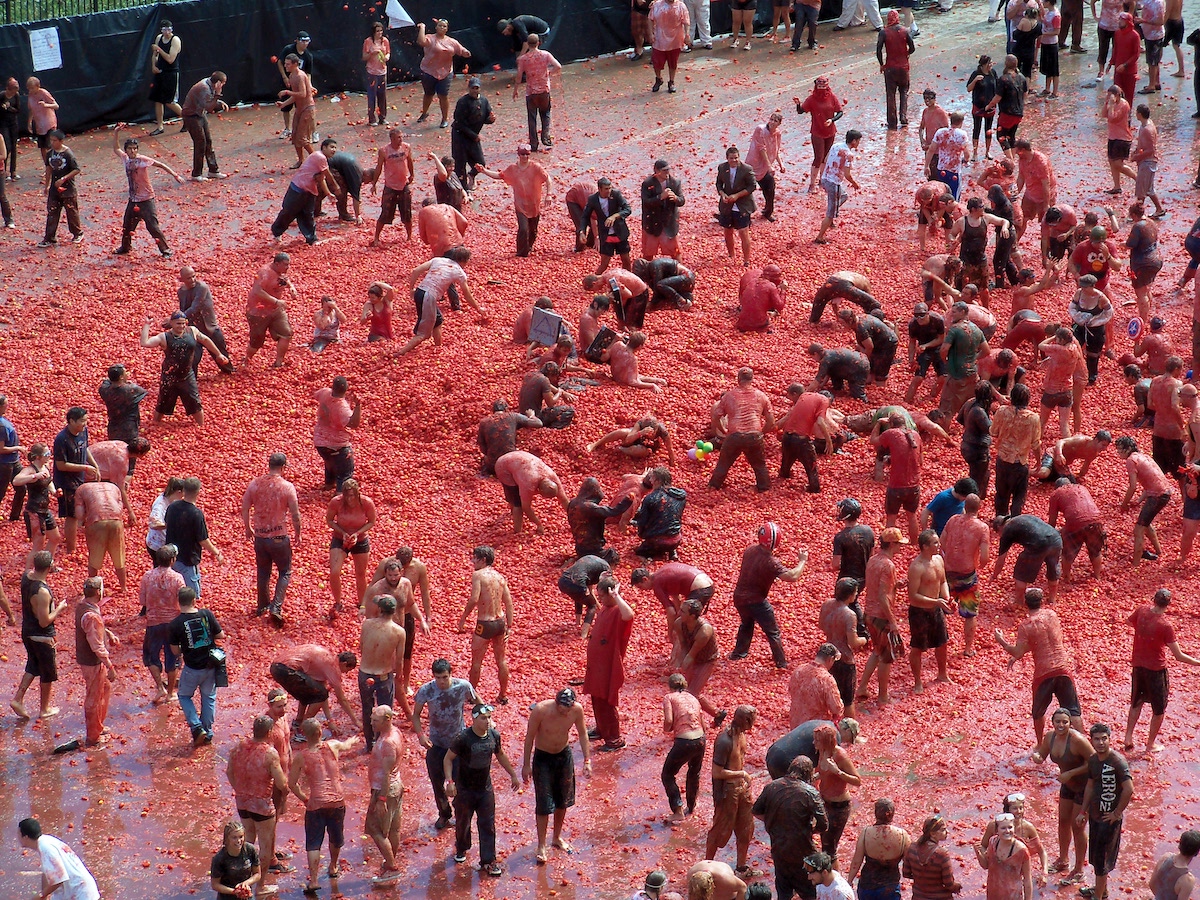
Popular Spanish Festivals FAQs
Fiesta is the Spanish word for “party!” Here in Spain, official holidays are often designated as a fiesta or festivo, so keep an eye out for those words on the calendar.
Spain’s official tourism board estimates that around 250 recognized festivals take place in the country every year. There’s always something going on!
Yes! As an overwhelmingly Catholic country, Spain does recognize and celebrate Christmas. One major difference from other cultures, though, is the fact that children traditionally receive gifts on Three Kings Day (January 6), rather than on Christmas Day itself.
Update Notice: This post was originally published on August 13, 2015 and was updated with new text and photos on April 7, 2021.






Spain is famous for hosting some of the most interesting festivals in the world and La Tomatina continues year after year. It is worth to visit once lifetime and enjoy best festival in world.